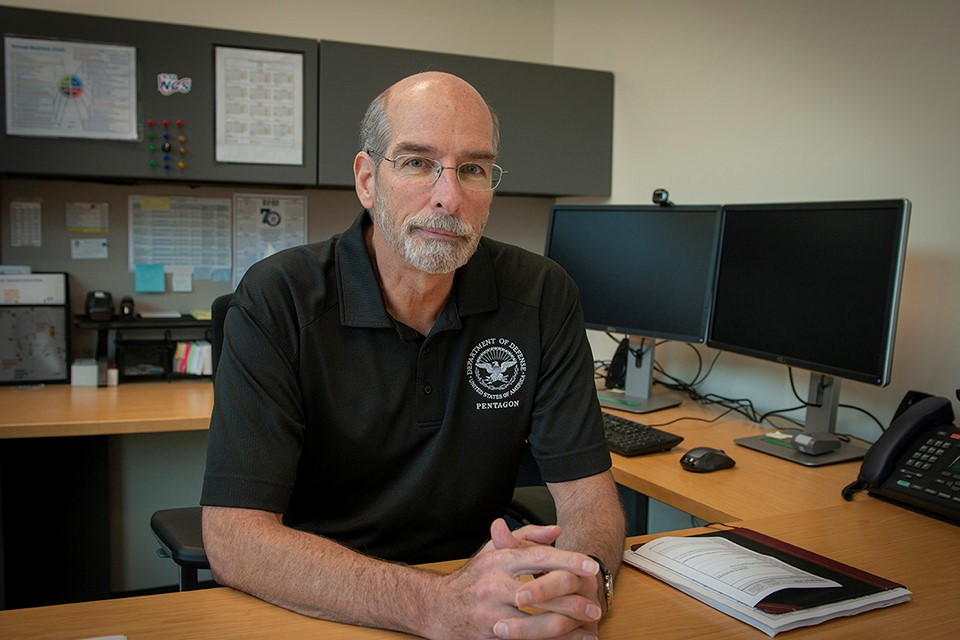I am mission success: Gary Sanders

Mission Engineering is led by Gary Sanders, who has a wealth of experience within the nuclear weapons complex. |
Gary Sanders has led a unique and distinguished career, including stops at the Pentagon and the U.S. Department of Energy Headquarters, where he interacted with top defense brass and foreign nuclear agencies. However, as a child, he aimed higher.
“I always wanted to be an Air Force pilot,” Sanders recalled, “but they wouldn’t let me fly because of my vision.” Instead, he pursued a new path — nuclear engineering and reactor design.
“I never could have predicted all the opportunities I have had,” said Sanders, whose opt in attitude has kept him on the go. An engineering internship at Bettis Atomic Power Laboratory led to graduate school and Sandia National Laboratories, where he helped design the nuclear weapons that Pantex and Y-12 maintain and refurbish today. Fewer than 12 years after starting his career, Sanders had his first special assignment in Washington, D.C., which eventually resulted in multiple assignments with the Air Force.
“I still didn’t get to fly their planes, but I did get to improve the safety features of their nuclear weapons.”
Before joining CNS, Sanders and his wife thoroughly enjoyed two years of retirement. “We’d alternate between visiting mountains and beaches,” he recalled, noting that outside of work he likes to scuba dive and hike. “I also volunteered at the aquarium and really enjoyed raising multiple litters of puppies for the local animal shelter,” Sanders said.
Why are you mission success, and how was it proven during the sites’ reduced, mission critical operations?
Mission Engineering enables Pantex and Y-12 Operations. Production equipment must work, project teams need to be able to do their updates, nuclear safety has to be in place, and so much more. The sites literally cannot do their mission without us, and we are useless if they can’t use what we design and build.
During the reduced, mission critical status, the importance of Mission Engineering was proven yet again: Approximately 80% of the Pantex work to build and surveil weapons continued, and we had teams set up to help with their Safety Basis, tools and procedures. Virtually all of the Development work continued as mission essential, including work on purifying uranium, melting binary, performing readiness assessments of lithium technology, and much more. All Engineering support for the Uranium Processing Facility continued across multiple shifts, and most project engineering support continued, including using computer-aided design to perform designs from home.
How did your opinion of your work environment change as CNS sites were placed in reduced, mission critical status? What is your favorite aspect about your work environment?
The flexibility to perform a large degree of engineering design work remotely has been eye opening and only made possible by the heroic support of Information Solutions and Services. I believe teleworking will permanently change some of how we do business in the future to accommodate family dynamics.
As for my favorite aspect, hands down, it is not having to wear a suit and tie. I wore both for years in Washington, D.C., while working at the Pentagon. I brought only one suit with me when I moved to Tennessee.
As an employee, what do you want to be remembered for?
I can think of two things. First, asking two important questions: Why are we doing it this way, and can we do it better? And second, for reinforcing educational standards for Pantex and Y-12 Engineering positions. An engineering degree denotes a level of technical rigor that must be in place for certain aspects of our work.
What work advice would you offer someone who is new to Pantex and Y-12?
Be open to experiences and challenges — they will both come, and both provide opportunities. Also, visit or transfer between the sites. It’s important to understand the people and challenges at both locations.
What one thing would your coworkers be surprised to know about you?
I was not raised in the United States. My father worked for U.S. Steel, which took us to Puerto Ordaz, Venezuela, where I grew up.
